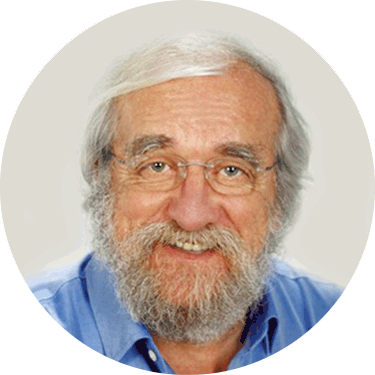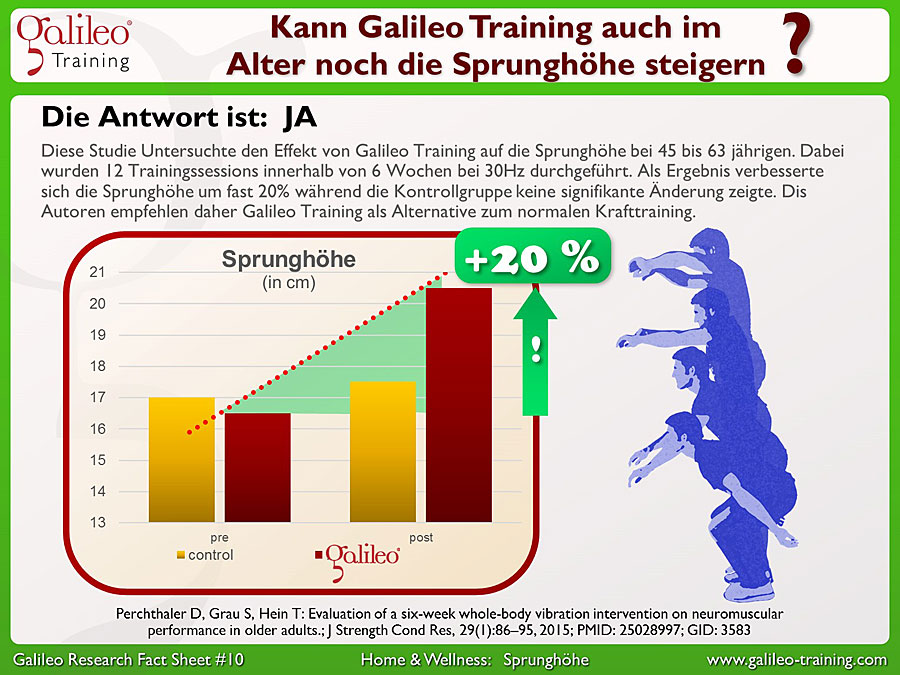Relationship between muscle and bone
“Use it or loose it”
This credo applies in particular to the bone, because the bone adapts throughout its life to the daily maximum forces that act on it. These maximum forces cause a small, elastic deformation of the bone (typically about 0.1% to 0.2% of its length). IIf this deformation exceeds a certain threshold, this stimulates the bone to become stronger. However, if this deformation falls below a second (lower) threshold, the bone is degraded.
Examples of this effect are bone loss in astronauts when they spend long periods of time on space stations, or in old people when they do not move enough over a long period of time. Both then suffer from function-related bone loss. This can be compensated for through targeted Galileo training.

A strong Bone needs a strong Muscle
Maximum forces during everyday movements
What forces actually act on our bones every day ?
A question to which a stunning answer must be given.
An answer that should make us rethink the subject of training, especially when it comes to the topic of bone formation, especially in old age.
EXTERNAL AND INTERNAL FORCES
First of all, it is astonishing that the maximum forces acting on the bones are not generated by external influences, but by the muscles themselves. This becomes clear when we consider the typical leverage ratios in the body. The ankle joint serves as a good example. When hopping stiffly on one leg (e.g. jumping rope), the forefoot of a healthy person is loaded with a force that is roughly equivalent to 3.5 times the body weight. The force for this obviously has to be generated essentially by the calf muscle.
AMPLIFICATION BY LEVERAGE RATIOS IN THE BODY
If we now take into account that the ratio between the distance from the forefoot to the ankle joint and the distance from the ankle joint to the Achilles tendon, where the calf muscle attaches, is approximately 3:1, the calf muscle must generate a force equivalent to 10.5 times the body weight in order to be able to generate a force equivalent to 3.5 times the body weight at the forefoot (ground reaction force). Since the calf muscle needs an anchor, this force must also act on the bone. So, during everyday movements, a force of 14 times the body weight and more is easily exerted on the lower leg bones.
For comparison: If you come down hard on your heel with your leg stretched out, you generate a force that is typically twice or 3 times your body weight. In this case, however, there is no lever, so the same force also acts on the bone. This simple example therefore shows that normally forces acting on the bone through the muscles are significantly greater than external forces acting on the bone.
CONSEQUENCES
This fact makes it clear that the correct kind of daily exercise is necessary to avoid bone loss. Targeted Galileo training can, for example, prevent this bone loss by improving the (neuro-) muscular properties.
It becomes clear from these observations that effective training for the bone requires intensive training that generates large internal forces adapted to the patient's abilities. Effective training for the bones must therefore be demanding but not too demanding, but definitely not sparing!

Do you have questions about our products or would you like to purchase a product?
Get advice from our experts. Simply arrange a phone-call to answer your questions.
Space Research -
A Model for Osteoporosis?
OSTEOPOROSIS IN SPACE ?
In fact, Osteoporosis is a combination of disposition and lack of physical activity (especially at old age). The actual extent of the effect of lack of physical activity on bone and muscle loss can be seen in Astronauts during prolonged space flights. Even though they are very fit and comparably young especially at the legs they develop the prestage of Osteoporosis, the Osteopenia. The reason is simply lack of physical activity, because there is no need to use the legs in the micro-gravity of space.BEDREST STUDIES AS A MODEL
In space research the lack of gravity (micro gravity) is simulated by so-called bedrest studies: Individuals must stay in bed all day for a period of 8 weeks - Work, shower, toilet - all in bed. Typically counter measures against the negative effects of micro-gravity and lack of physical activity on Bone, Muscle , Neurology and the cardiovascular system are tested - for example novel training systems. Galileo® has proven to be very effective and at the same time very efficient in this context.Galileo® Space
VIBRATION TRAINING IN SPACE RESEARCH
Galileo® is the vibration training device frequently used in space research.

Intensive whole body workout
"Galileo is the most intense full-body workout I've encountered in my decades of practice. Good for astronauts and anyone in the gym."
You would like to know more about the background of Galileo® Training ?
Choose one of the following topics:
Galileo® active principle side alternation
Frequency ranges and their effect
Galileo® Basic Exercises
Galileo® Training Fact sheets
Research results on the application of
Galileo® Training. Get fit - stay fit.
Let Galileo® Training convince you!
Numerous scientific publications show the effectiveness of Galileo Training.
Benefit from the knowledge gained from over 25 years of experience and from over 500 scientific publications on Galileo worldwide.













